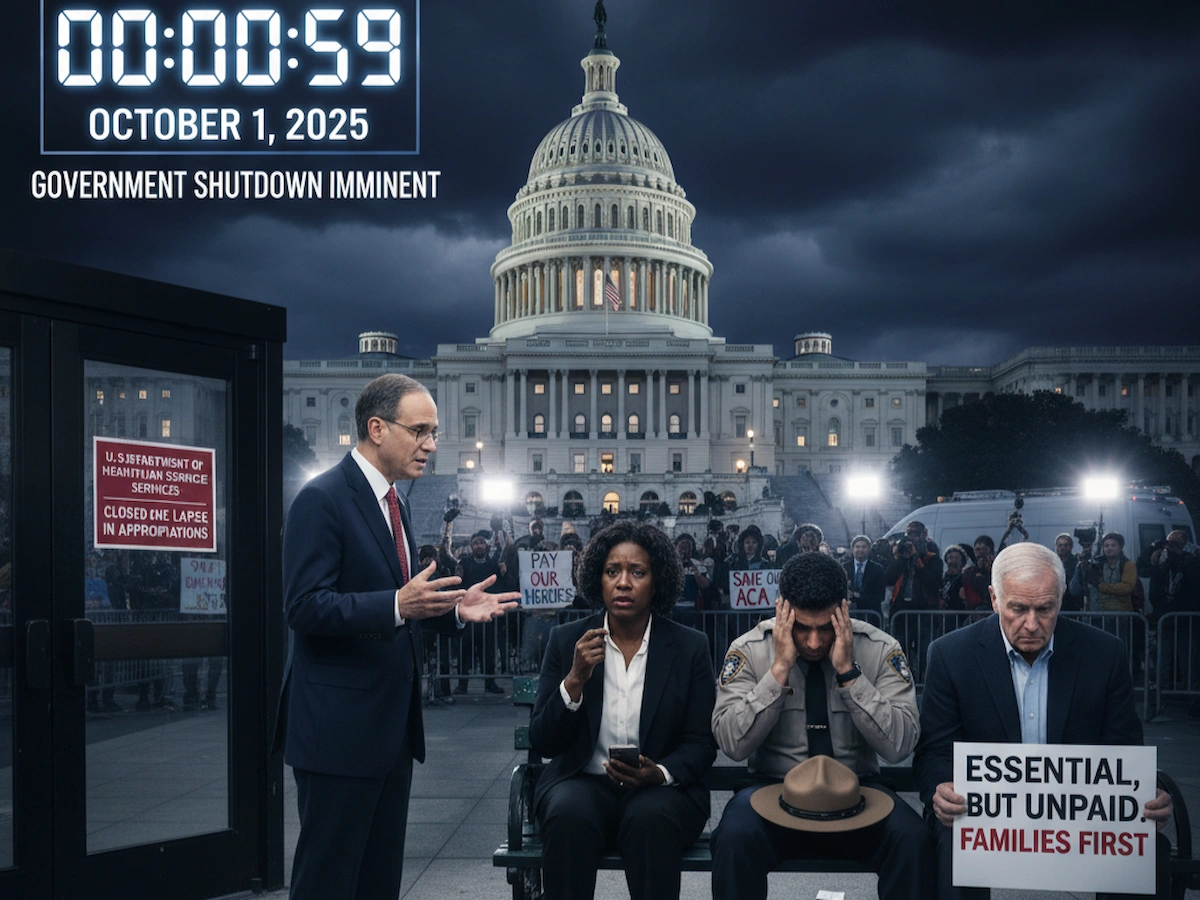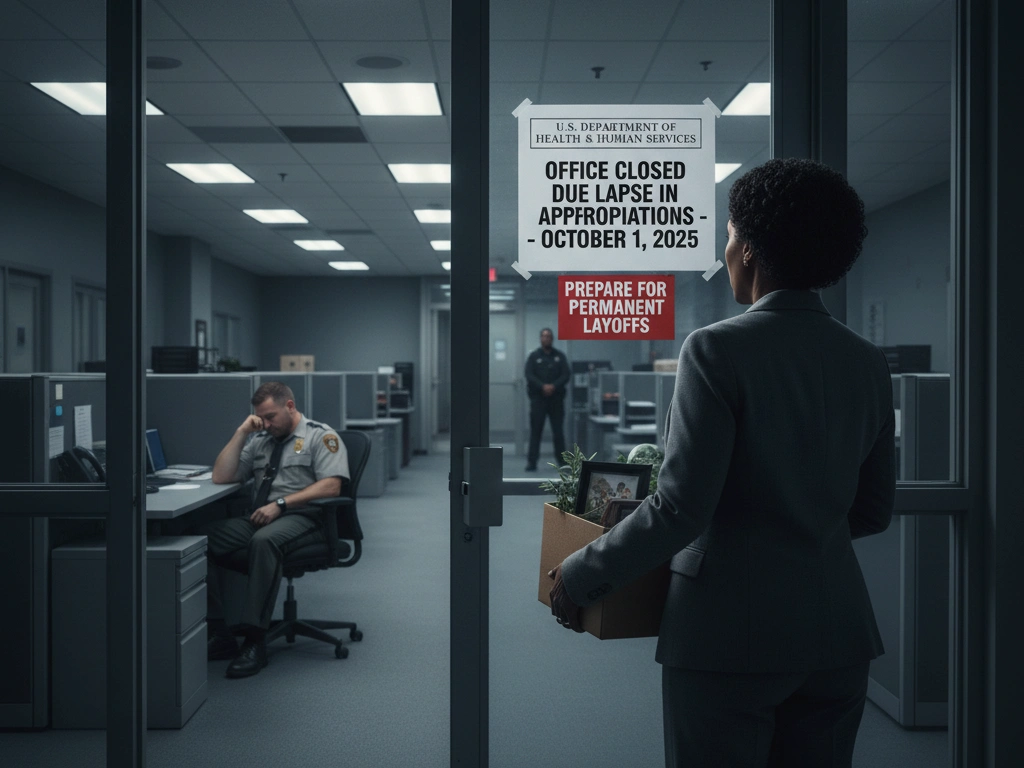GloNews10

As of Tuesday evening, September 30, 2025, the U.S. federal government shutdown has not yet formally begun, but the nation stands precisely at the edge of a fiscal cliff. The midnight deadline tonight marks the end of the current funding cycle, and with no legislative agreement in sight, a lapse in appropriations is now virtually guaranteed to occur at 12:01 AM on Wednesday, October 1, 2025.
For days, the critical question echoing across Washington and the homes of federal workers has been: Did the government shut down? The final answer will be delivered in the first minutes of Wednesday, ushering in the first government shutdown since 2019. This event will halt funding for roughly one-quarter of government operations and trigger massive uncertainty for millions of Americans.
The root cause of this fiscal failure is the inability of Congress to agree on funding bills for the new fiscal year (FY 2026). However, the immediate trigger is a fierce partisan battle over health care and spending authority, making this a fight over policy, not just dollars.
Why is the government shutting down right now?
Senate Minority Leader Chuck Schumer (D-NY) has been resolute, leading the Democratic caucus in blocking short-term funding measures proposed by the Republican majority. Schumer argues that Republicans’ recent tax and spending cuts have endangered health coverage for millions, forcing Democrats to use the funding deadline as leverage.
Schumer’s key demands for averting the shutdown are tied to social safety nets:
Schumer insists that if the Republican-led Congress and the White House refuse to negotiate on these critical health care issues, they alone will bear the blame for the shutdown. “It’s in the president’s hands whether we avoid a shutdown or not,” Schumer stated, underscoring the deep policy divide.
Republicans, who control both the House and the Senate, have pushed for a “clean” Continuing Resolution (CR) that would fund the government through late November, arguing that policy debates should be separate from essential funding.
Senate Majority Leader John Thune (R-SD) accused Democrats of “hostage-taking,” asserting that policy talks can only begin once the “hostage”—the federal government—is released. Despite their unity in rejecting the Democrats‘ demands, the GOP needs at least nine Democratic votes in the Senate to overcome the filibuster and pass any funding bill, creating the deadlock that ensures the shutdown.

The consequences of this lapse in appropriations are immediate and far-reaching, fundamentally changing the operations of the government and affecting daily life for millions. What happens during a government shutdown is determined by each agency’s contingency plan, which separates workers into “essential” (excepted) and “non-essential” (furloughed) categories.
Approximately 900,000 federal employees are projected to be impacted:
Crucially, this government shutdown 2025 update includes the unprecedented threat of permanent layoffs. The White House Office of Management and Budget (OMB) has directed agencies to prepare for a Reduction in Force (RIF) for programs that are unfunded and do not align with administration priorities. This threat would turn a temporary furlough into a permanent job loss, potentially dismantling key agencies and permanently reducing the size of the federal workforce.
While services funded through mandatory spending continue, the public will see major disruptions:
| Service Category | Status & Impact |
| Social Security & Health | Social Security checks and Medicare/Medicaid benefits continue, but administrative services (like applying for new cards or correcting records) will slow dramatically. The WIC nutrition program is at immediate risk of running out of funds. |
| Travel & Safety | Air Traffic Control and TSA will operate unpaid, potentially leading to increased delays and safety concerns due to staffing shortages and morale issues. Mail service continues, as the USPS is independently funded. |
| Economic Functions | The Small Business Administration (SBA) will halt the processing of new small business loans, cutting off crucial credit for entrepreneurs. IRS taxpayer assistance and audit reviews will largely cease. |
| Recreation & Culture | Most National Parks and Monuments will close visitor centers and services. Smithsonian museums and the National Zoo in Washington D.C. will also likely close their doors to the public. |
Understanding the current crisis requires looking back at the last time the nation faced this level of fiscal chaos.
When was the last government shutdown? It occurred from December 22, 2018, to January 25, 2019, lasting 35 days. This event, which spanned the Christmas and New Year holidays, remains the longest federal government shutdown in U.S. history. That shutdown was triggered by a stalemate over funding for the U.S.-Mexico border wall.
The economic fallout from that episode was significant, with the Congressional Budget Office (CBO) estimating a permanent loss of $3 billion in economic activity. Economists fear that the 2025 shutdown, with its added threat of permanent layoffs and its focus on health care cuts, could inflict an even deeper and more lasting economic wound, possibly dragging down GDP growth by $7 billion per week.
As of this evening, the legislative path to avoiding the shutdown is effectively closed. Both the House’s short-term bill and the Democrats’ counter-proposal were rejected in the Senate. Republicans need bipartisan support to advance their CR, but Chuck Schumer has effectively united his caucus behind the health care demands.
The government shutdown 2025 update is simple: unless a breakthrough occurs in the final hours, non-essential operations will cease at midnight. The political blame game is already in full swing, but the immediate cost will be borne by the American civil servants, their families, and the general public relying on federal services.
With the unprecedented threat of mass layoffs now on the table, the 2025 shutdown marks a dangerous escalation in Washington’s budget battles, where essential functions of government are increasingly treated as bargaining chips in a high-stakes partisan game.